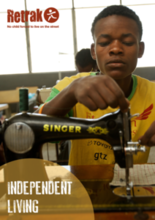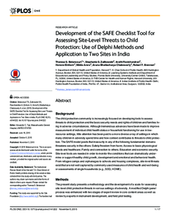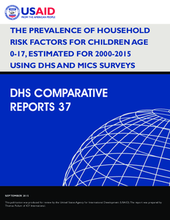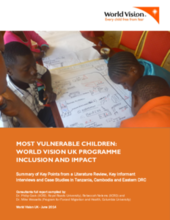Displaying 311 - 320 of 501
This is a 15 month qualitative study involving semi-structured interviews with families and boys at three stages: preparing for return, in the first three months of reintegration and successfully reintegrated.
This is an explorative study undertaken in central and south part of the Mumbai with the objective of investigating socio-economic, demographic and cultural characteristics of street adolescents in Mumbai.
This review was established to examine the reasons for, and how best to tackle, the over representation of children in care, or with experience of care, in the criminal justice system in England and Wales.
Retrak has released a literature review on independent living programmes in an effort to understand the needs of young people coming of age on the streets.
This study in India sought to develop the SAFE Checklist in order to assess site-level threats to child protection among children and families living in settings of adversity. The tool was field tested in two diverse sites in India (a construction site and a railway station) and the results demonstrated that the SAFE Checklist is a sensitive tool that captured the differences between the two sites from the standpoint of core child protection issues.
This animated video from Lumos, narrated by Lumos founder J.K. Rowling, illustrates the “tragic consequences of orphanage care,” and argues that more can and should be done to support families to care for their children, eliminating the use of institutional care.
This report uses 80 surveys conducted by The Demographic and Health Surveys Program (DHS) and 55 Multiple Indicator Cluster Surveys (MICS), between 2000 and 2014 in 70 different countries, to estimate the prevalence of the components and combinations of vulnerability.
The purpose of the research highlighted in this report was to assess and analyze the extent to which World Vision UK is reaching ‘the most poor and marginalised’ or Most Vulnerable Children (MVC) through its Child Protection programming in Cambodia, Tanzania, and Eastern DRC.
In this executive summary, the Truth and Reconciliation Commission of Canada provides an introduction to the use of residential schools for aboriginal children in Canada, presents an overview of the Commission’s activities, describes the history and legacy of these residential schools, and outlines the challenges of reconciliation, including 94 recommendations, or “calls to action” for reconciliation in the field of Child Welfare among many others.
Using empirical data and interviews with orphans in Jordan, this article investigates how they experience the patriarchy of law, society, and the state.






